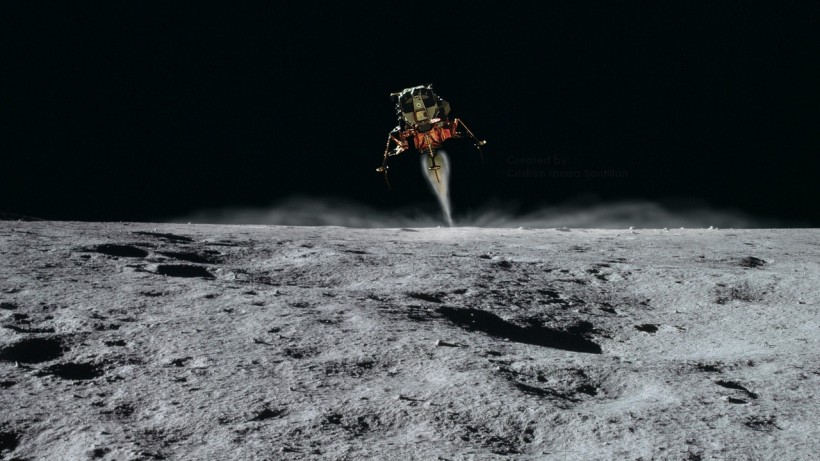Professor Stephen Hawking has made significant time travel findings that might rock the foundations of contemporary physics.
However, the late cosmologist has warned about sending new messages to outer space.

Illustration of Apollo 11 spacecraft landing on the Moon.
Stephen Hawking's Stance On Time Travel
Professor Hawking revealed big-time travel insights in his final work, published seven months after his death, and might shock contemporary physics to its core.
He said per Express.co.uk: "Rapid space travel and travel back in time can't be ruled out according to our present understanding."
According to Albert Einstein's law of general relativity, moving faster than the speed of light is necessary for time travel.
However, endless quantities of energy would be required to power a spaceship or machine capable of traveling at these incredible speeds.
In 1905, Einstein realized that this paradox indicated that time travel could not be accomplished.
On the other hand, Professor Hawking believes Einstein's 1915 study of gravity, space, and time may have uncovered a solution to the conundrum.
According to the scientist, the warping of space-time near massive stars and black holes might be strong enough to allow people to travel through time.
It would be accomplished by distorting the fabric of the universe itself between two places in time and space, thereby creating a time-traveling wormhole.
Although time travel is not currently achievable with current technology, future civilizations might be able to do so.
Hawking Warns Against Contacting Other Beings From Outer Space
Meanwhile, reports claim that Stephen Hawking reportedly advised against attempting to communicate with intelligent life and instead encouraged people to listen more.
Hawking examined one area of human history and saw an unfortunate tendency that might emerge when two civilizations meet - conflict, bloodshed, and dominance.
"If intelligent life has evolved [elsewhere], we should be able to hear it," said Hawking per IFL Science.
"One day, we might receive a signal from a planet like this, but we should be wary of answering back. Meeting an advanced civilization could be like Native Americans encountering Columbus. That didn't turn out so well."
But according to Daily Mail, experts are now intending to send a radio transmission deep into space with Earth's position, hoping that it may be received and understood one day.
NASA is collaborating with some of the country's brightest scientists in the hopes of transmitting a new radio message through a high-tech telescope, similar to what we accomplished in 1974 from a telescope in Puerto Rico (then called the "Arecibo").
The Beacon in the Galaxy (BITG) message is essentially a modernized version of the renowned Arecibo message, which was initially broadcast in 1974 for the same purpose.
That was conveyed in binary code (ones and zeroes), which, when decoded, produced a visual picture depicting a stick figure of a human, our DNA, and a representation of our solar system.
The BITG message will likewise feature a depiction of DNA, the solar system, and a representation of the male and female forms. Still, it will also include more information about fundamental mathematics and physics than the Arecibo message.
Reports said there would be information on the most frequent elements on Earth, a map of our planet's existing landmasses, and an invitation to respond to the message, for example.
It's nice to desire to communicate with other civilizations and cool that scientists are trying to find other beings outside the planet. However, there might be a drawback to being too open with our interstellar neighbors.
For decades, some academics have speculated that we may not desire their attention, which might explain why we've never heard from another civilization. They may be all keeping their mouths shut on purpose.
The BITG project was recently described on the pre-print website arXiv by Jonathan Jiang of NASA's Jet Propulsion Laboratory at the California Institute of Technology and colleagues.
RELATED ARTICLE: What's Your Birthday Astronomy Image? Here's What NASA's Hubble Space Telescope Captured On Your Special Day
Check out more news and information on Space in Science Times.














